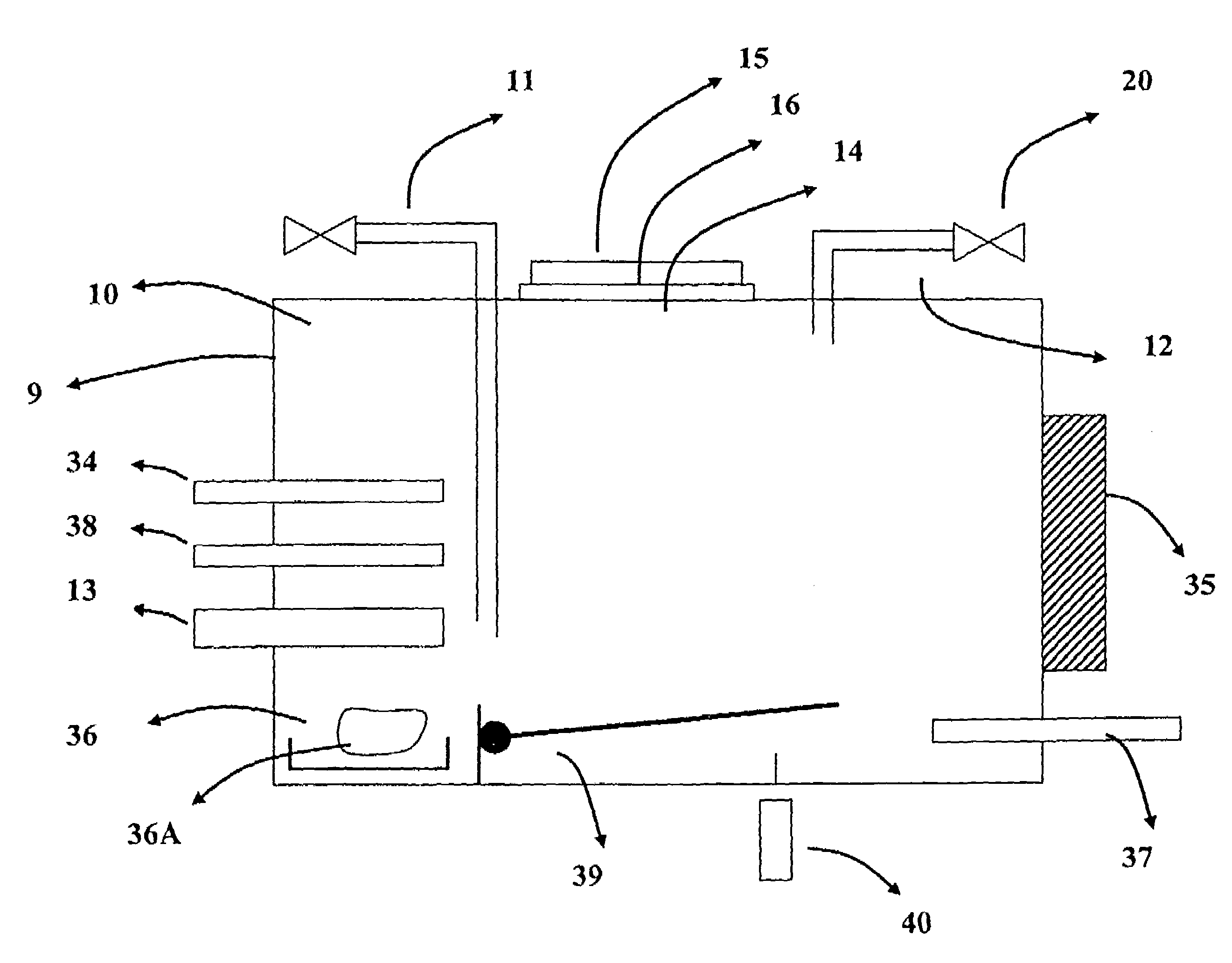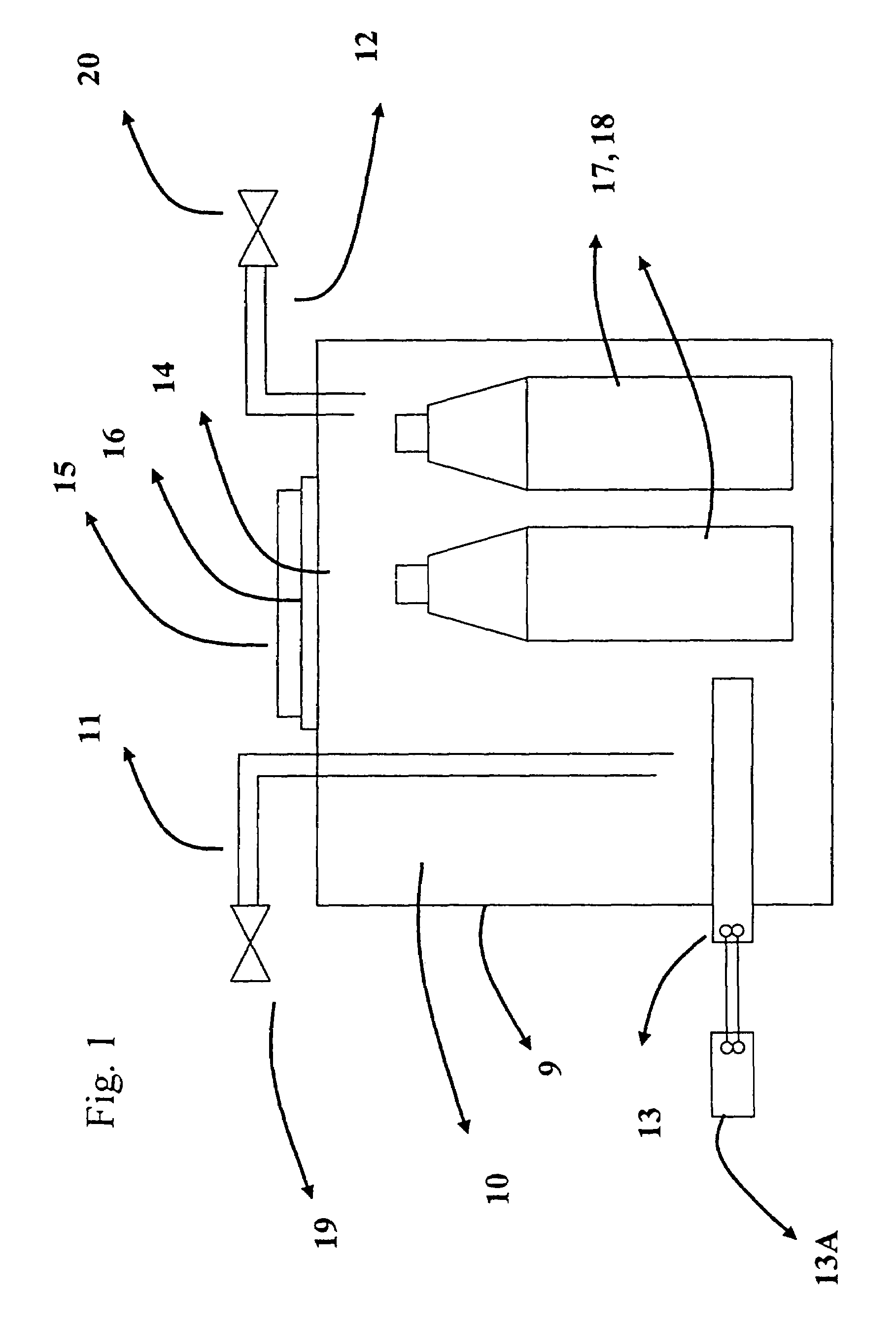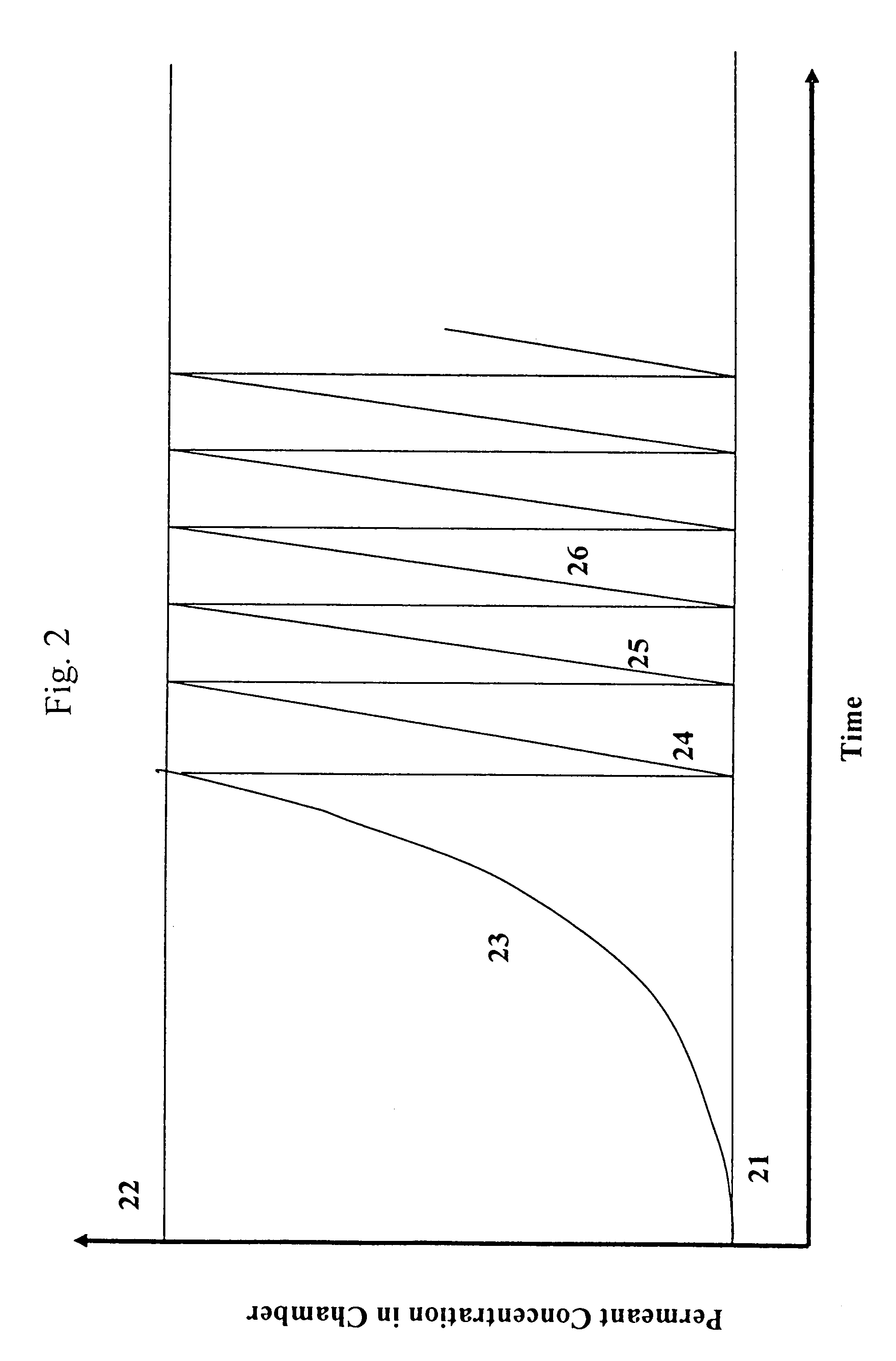Apparatus and technique for measuring permeability and permeant sorption
a technology of permeant sorption and apparatus, applied in the direction of fluid loss/gain rate measurement, fluid tightness measurement, instruments, etc., can solve the problems of higher water vapor loss, higher aroma loss, and inferior vapor barrier properties of plastic materials compared to glass and metal containers
- Summary
- Abstract
- Description
- Claims
- Application Information
AI Technical Summary
Benefits of technology
Problems solved by technology
Method used
Image
Examples
Embodiment Construction
[0029]Turning now to the drawings in which like reference characters indicate corresponding elements, attention is first directed to FIG. 1 which illustrates a housing 9 defining an inner sealed chamber 10 with several attachments. Housing 9 and all the attachments are preferably made of materials substantially impervious to the permeant of interest, for example, stainless steel. Tubings 11 and 12, connected to an inlet and an outlet, respectively, of chamber 10, are used to flush chamber 10 with an inert medium. A valve 19 connected to tubing 11 and a valve 20 connected to tubing 12 are included for this purpose. A permeant sensor 13 is conveniently located at least partially within chamber 10 so that permeant within chamber 10 can be sensed and noted externally of chamber 10. The inert medium, which is also substantially free of the permeant, is chosen such that it does not interfere with the detection of permeant by permeant sensor 13.
[0030]For example, if carbon dioxide (CO2) is...
PUM
 Login to View More
Login to View More Abstract
Description
Claims
Application Information
 Login to View More
Login to View More - R&D
- Intellectual Property
- Life Sciences
- Materials
- Tech Scout
- Unparalleled Data Quality
- Higher Quality Content
- 60% Fewer Hallucinations
Browse by: Latest US Patents, China's latest patents, Technical Efficacy Thesaurus, Application Domain, Technology Topic, Popular Technical Reports.
© 2025 PatSnap. All rights reserved.Legal|Privacy policy|Modern Slavery Act Transparency Statement|Sitemap|About US| Contact US: help@patsnap.com



